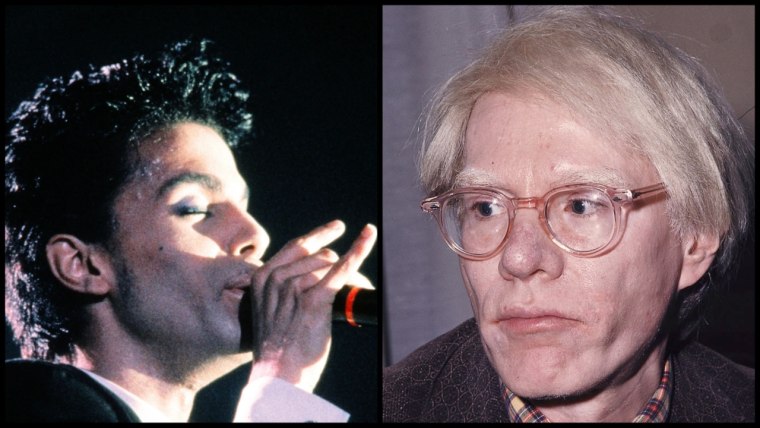 Left: Prince, photo by Pascal George/AFP via Getty Images. Right: Andy Warhol, public domain portrait via picryl.
Left: Prince, photo by Pascal George/AFP via Getty Images. Right: Andy Warhol, public domain portrait via picryl.
The Federal Supreme Court has ruled that Andy Warhol infringed on photographer Lynn Goldsmith’s copyright in his use of a photograph she took of Prince for his own silkscreen portrait of the rock god. The court’s 7-2 ruling in favor of Goldsmith and against the Andy Warhol Foundation confirmed that Warhol’s repeated use of Goldsmith’s photo did not fall under the domain of the fair use doctrine and therefore violated copyright law.
“This copyright case involves not one, but two artists,” Justice Sonia Sotomayor wrote today (May 18) in the opinion of the court. “The first, Andy Warhol, is well known. His images of products like Campbell’s soup cans and of celebrities like Marilyn Monroe appear in museums around the world. Warhol’s contribution to contemporary art is undeniable. The second, Lynn Goldsmith, is less well known. But she too was a trailblazer. Goldsmith began a career in rock-and-roll photography when there were few women in the genre. Her award-winning concert and portrait images, however, shot to the top. Goldsmith’s work appeared in Life, Time, Rolling Stone, and People magazines, not to mention the National Portrait Gallery and the Museum of Modern Art. She captured some of the 20th century’s greatest rock stars: Bob Dylan, Mick Jagger, Patti Smith, Bruce Springsteen, and, as relevant here, Prince.
“In 1984, Vanity Fair sought to license one of Goldsmith’s Prince photographs for use as an ‘artist reference,’” the opinion continues. “The magazine wanted the photograph to help illustrate a story about the musician. Goldsmith agreed, on the condition that the use of her photo be for “one time” only.
“The artist Vanity Fair hired was Andy Warhol. Warhol made a silkscreen using Goldsmith’s photo, and Vanity Fair published the resulting image alongside an article about Prince. The magazine credited Goldsmith for the ‘source photograph,’ and it paid her $400. Warhol, however, did not stop there. From Goldsmith’s photograph, he derived 15 additional works. Later, the Andy Warhol Foundation for the Visual Arts, Inc. (AWF) licensed one of those works to Condé Nast, again for the purpose of illustrating a magazine story about Prince. AWF came away with $10,000. Goldsmith received nothing.
“When Goldsmith informed AWF that she believed its use of her photograph infringed her copyright, AWF sued her. The District Court granted summary judgment for AWF on its assertion of “fair use,” but the Court of Appeals for the Second Circuit reversed. In this Court, the sole question presented is whether the first fair use factor, ‘the purpose and character of the use, including whether such use is of a commercial nature or is for nonprofit educational purposes,’ weighs in favor of AWF’s recent commercial licensing to Condé Nast. On that narrow issue, and limited to the challenged use, the Court agrees with the Second Circuit: The first factor favors Goldsmith, not AWF. “
Justice Elena Kagan gave the dissenting opinion, with which Chief Justice John Roberts concurred. “You’ve probably heard of Andy Warhol; you’ve probably seen his art,” she wrote. “You know that he reframed and reformulated — in a word, transformed — images created first by others. Campbell’s soup cans and Brillo boxes. Photos of celebrity icons: Marilyn, Elvis, Jackie, Liz — and, as most relevant here, Prince. That’s how Warhol earned his conspicuous place in every college’s Art History 101. So it may come as a surprise to see the majority describe the Prince silkscreen as a ‘modest alteration’ of Lynn Goldsmith’s photograph — the result of some ‘crop[ping]‘ and ‘flatten[ing]’ — with the same “essential nature.” Or more generally, to observe the majority’s lack of appreciation for the way his works differ in both aesthetics and message from the original templates.
“In a recent decision, this Court used Warhol paintings as the perfect exemplar of a ‘copying use that adds something new and important’ — of a use that is ‘transformative,’ and thus points toward a finding of fair use,” she added. “That Court would have told this one to go back to school.”


